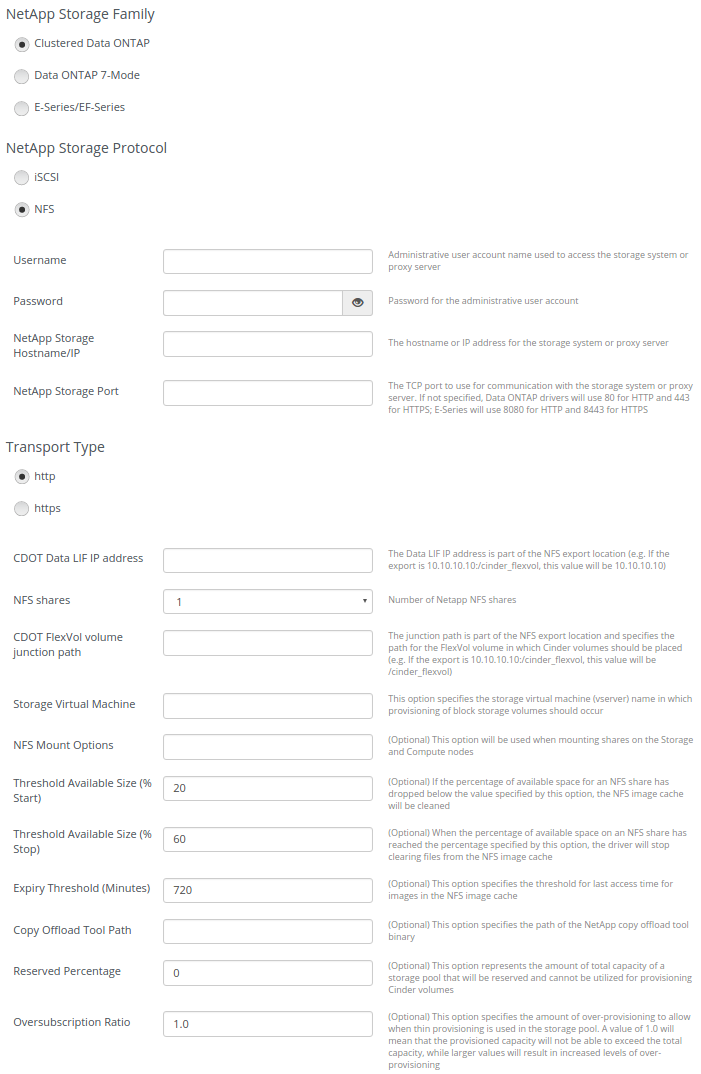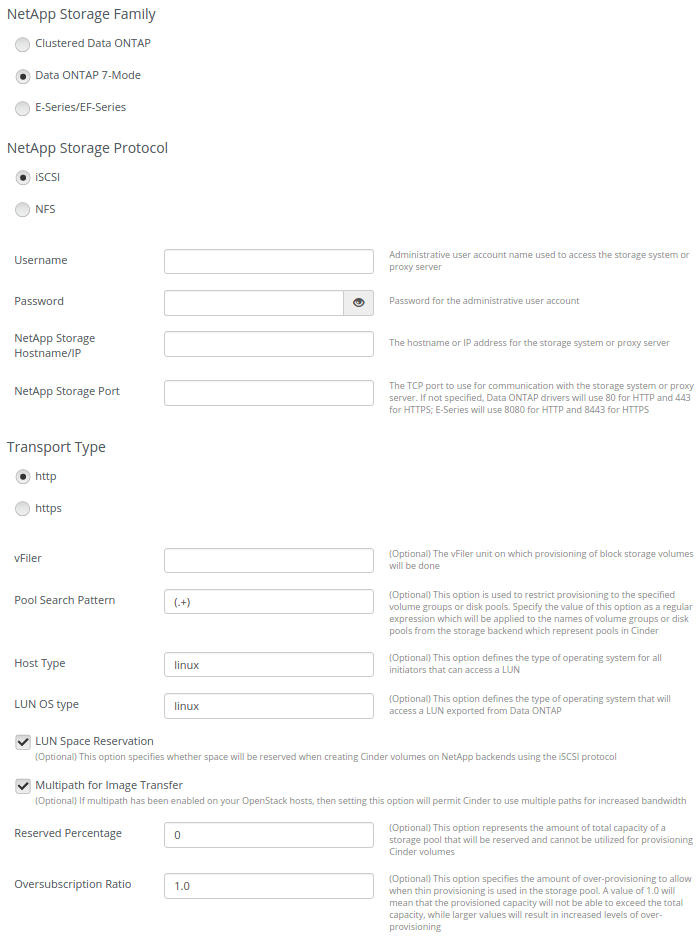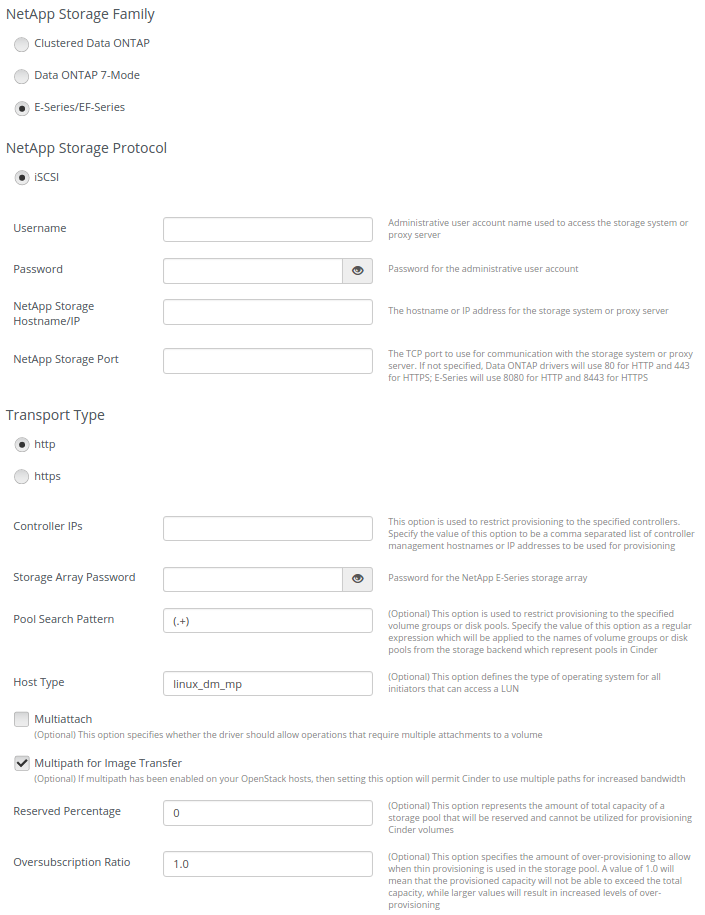4.5 KiB
Configuring NetApp plugin
Once the Fuel Cinder NetApp plugin has been installed, you can create OpenStack environments that use NetApp storage as a Cinder backend.
Create an OpenStack environment using the Fuel UI wizard:

Finish environment creation following the instructions.
Once the environment is created, open the Settings tab of the Fuel Web UI and then Storage. Scroll down the page. Select the Cinder and NetApp integration checkbox:

Choose storage family and storage protocol. Several options are available.
If you plan to use Clustered Data mode through NFS, click Clustered Data ONTAP radio button and select NFS option in NetApp Storage Protocol. You should also choose NetApp transport type (http or https).
Specify the following parameters in the text fields:
- Username
- Password
- NetApp Storage Hostname/IP
- CDOT Data LIF IP address
- CDOT FlexVol volume junction path
- Storage Virtual Machine

If you plan to use Clustered Data mode through iSCSI, click Clustered Data ONTAP radiobutton and select iSCSI option in NetApp Storage Protocol. You should also choose NetApp transport type (http or https).
Specify the following parameters in the text fields:
- Username
- Password
- NetApp Storage Hostname/IP
- Storage Virtual Machine

If you plan to use 7-Mode through NFS, click Data ONTAP 7-Mode radiobutton and select NFS option in NetApp Storage Protocol. You should also choose NetApp transport type (http or https).
Specify the following parameters in the text fields:
- Username
- Password
- NetApp Storage Hostname/IP
- CDOT Data LIF IP address
- CDOT FlexVol volume junction path

If you plan to use 7-Mode through iSCSI, click Data ONTAP 7-Mode radiobutton and select iSCSI option in NetApp Storage Protocol. You should also choose NetApp transport type (http or https). Specify the following parameters in the text fields:
- Username
- Password
- NetApp Storage Hostname/IP

If you plan to use E-Series or EF-Series, click E-Series/EF-Series radiobutton and select the only available iSCSI option in NetApp Storage Protocol. You should also choose NetApp transport type (http or https). Specify the following parameters in the text fields:
- Username
- Password
- NetApp Storage Hostname/IP
- Controller IPs
- Storage Array Password

Using Nodes tab, add nodes and assign roles to them.
This step is needed only when local fuel mirrors are used Following packages
nfs-common,open-iscsi,multipath-toolsaren't included by default when local mirror is created. To have these packages available during deploy you have to add them into/usr/share/fuel-mirror/ubuntu.yamlfile inpackages: &packagessection.packages: &packages - "nfs-common - "open-iscsi" - "multipath-tools"Press Deploy button once you are done with environment configuration.
When the deployment is done, you may perform functional testing. You can find instructions in NetApp Mirantis Unlocked Reference Architecture, paragraph 8.3.
Note
Only if using Ceph. Do not be confused by error when removing Ceph OSD node. For details see Fuel bug.